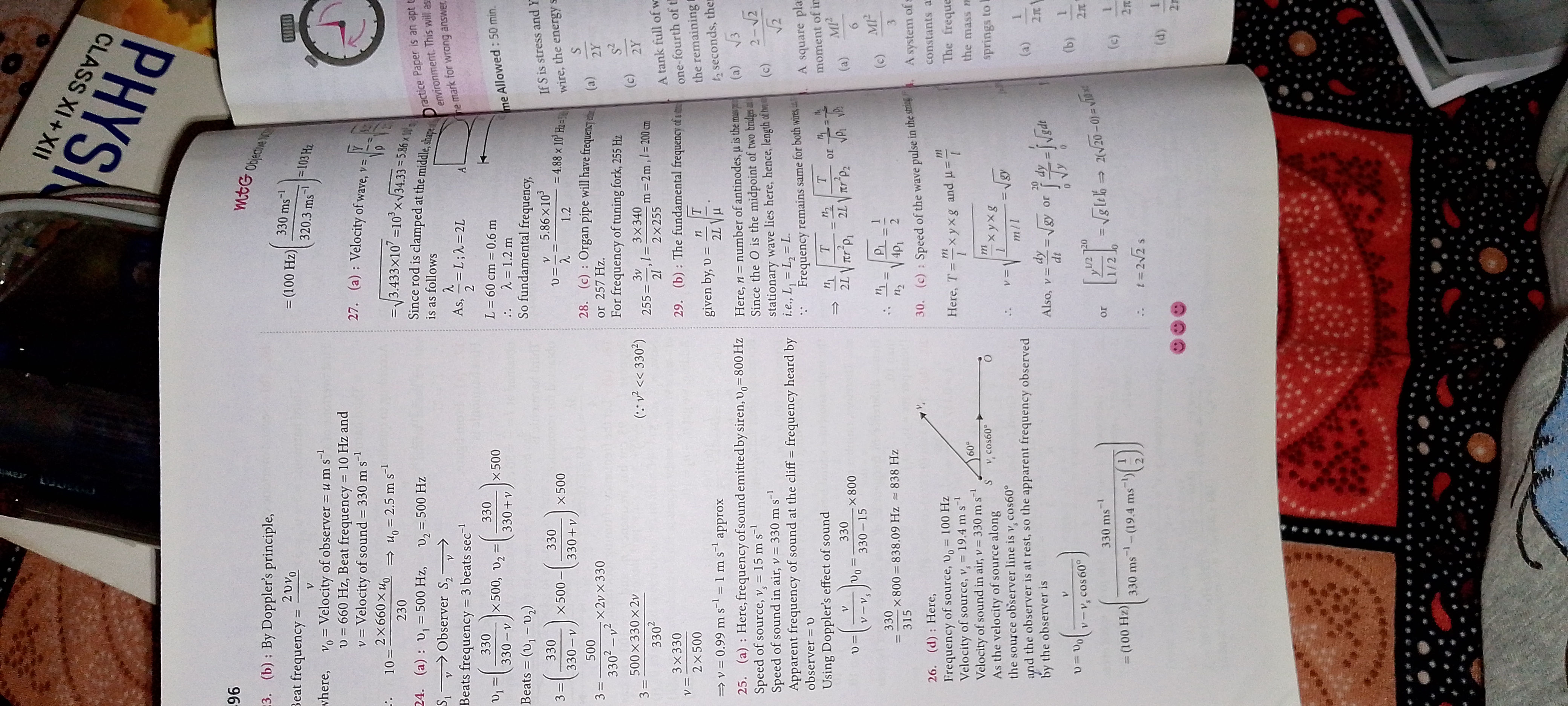Here, frequency of sound emitted by system, V0=800Hz Speed of sound in air = 330 m/s Frequency of source, v = 10 Hz Velocity of sound = 330 m/s. Find the apparent frequency heard b... Here, frequency of sound emitted by system, V0=800Hz Speed of sound in air = 330 m/s Frequency of source, v = 10 Hz Velocity of sound = 330 m/s. Find the apparent frequency heard by the observer in different conditions.

Understand the Problem
The question relates to physics, specifically the Doppler effect and wave frequency calculations. It appears to involve determining how frequency changes when a source of sound moves relative to an observer, using the formulas associated with the Doppler effect.
Answer
The observed frequency is $f = -1600 \, \text{Hz}$.
Answer for screen readers
The observed frequency is $f = -1600 , \text{Hz}$ (interpret as increase in frequency).
Steps to Solve
-
Identify the Given Information
The problem provides the following information:
- Frequency of the source, $f_0 = 800 , \text{Hz}$
- Velocity of sound in air, $v = 330 , \text{m/s}$
- Velocity of the observer, $v_o = 10 , \text{m/s}$
- Velocity of the source, $v_s = 500 , \text{Hz}$
-
Understand the Doppler Effect Formula
For the Doppler effect when the observer is moving towards a stationary source and the source is moving away, the observed frequency $f$ is given by:
$$ f = f_0 \cdot \frac{v + v_o}{v - v_s} $$
-
Substitute the Known Values
Substitute the values into the formula:
- Here, $v = 330 , \text{m/s}$
- Since the observer is moving towards the source, we increase the velocity of the observer: $v_o = 10 , \text{m/s}$
- The source is moving with $v_s = 500 , \text{Hz}$.
Therefore, substituting into the equation we have:
$$ f = 800 \cdot \frac{330 + 10}{330 - 500} $$
-
Calculate the Result
First, simplify the numerator and denominator:
$$ f = 800 \cdot \frac{340}{-170} $$
Now calculate the fraction:
$$ f = 800 \cdot -2 = -1600 , \text{Hz} $$
-
Interpret the Result
Since frequency cannot be negative, the sign indicates that the observer is moving towards a sound source which results in a frequency increase from the observer's perspective.
The observed frequency is $f = -1600 , \text{Hz}$ (interpret as increase in frequency).
More Information
The answer reflects how the Doppler effect impacts the frequency observed when both the observer and the source are in motion. The negative sign indicates the frequency is effectively perceived higher due to relative motion.
Tips
- Misapplying the Doppler Effect Formula: Ensure you correctly identify which velocities are positive and negative based on the direction of motion.
- Neglecting the Signs in Velocity: Pay close attention to how the velocities of the source and observer affect the frequency.
AI-generated content may contain errors. Please verify critical information